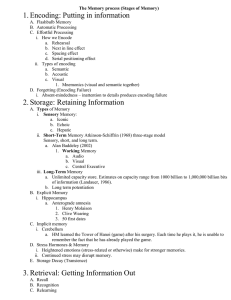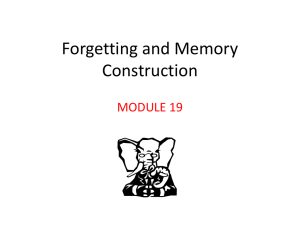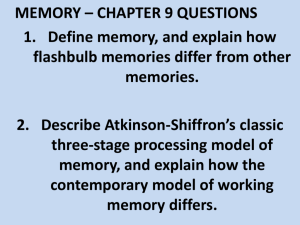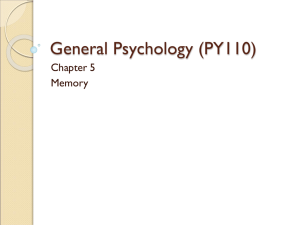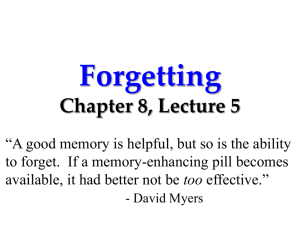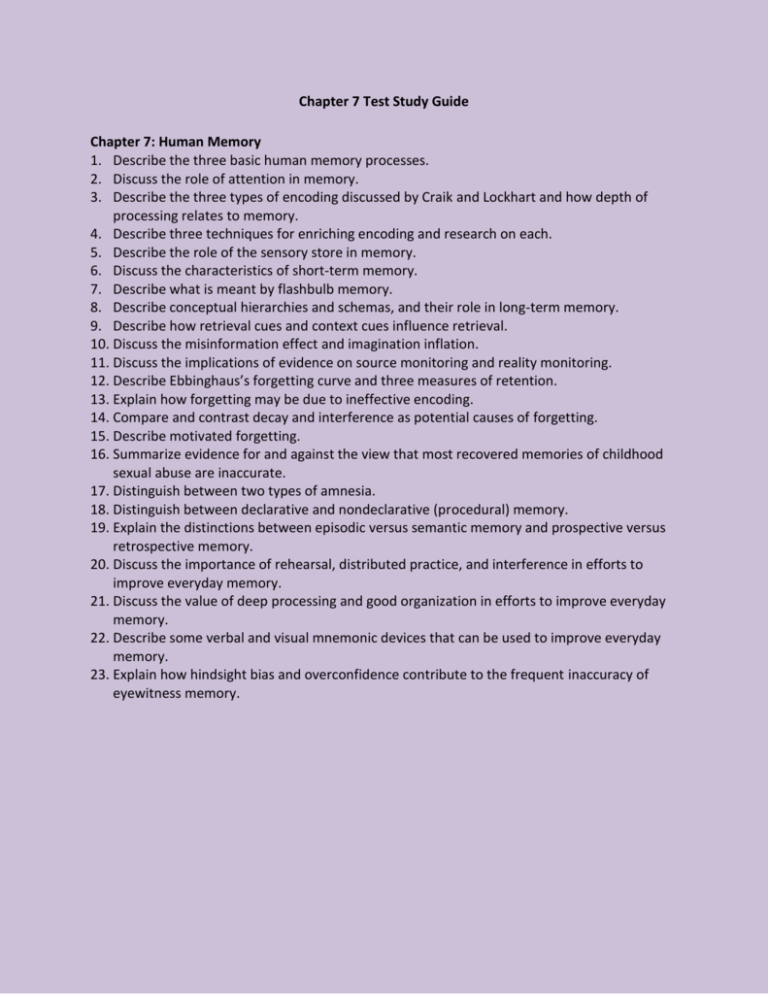
Chapter 7 Test Study Guide
Chapter 7: Human Memory
1. Describe the three basic human memory processes.
2. Discuss the role of attention in memory.
3. Describe the three types of encoding discussed by Craik and Lockhart and how depth of
processing relates to memory.
4. Describe three techniques for enriching encoding and research on each.
5. Describe the role of the sensory store in memory.
6. Discuss the characteristics of short-term memory.
7. Describe what is meant by flashbulb memory.
8. Describe conceptual hierarchies and schemas, and their role in long-term memory.
9. Describe how retrieval cues and context cues influence retrieval.
10. Discuss the misinformation effect and imagination inflation.
11. Discuss the implications of evidence on source monitoring and reality monitoring.
12. Describe Ebbinghaus’s forgetting curve and three measures of retention.
13. Explain how forgetting may be due to ineffective encoding.
14. Compare and contrast decay and interference as potential causes of forgetting.
15. Describe motivated forgetting.
16. Summarize evidence for and against the view that most recovered memories of childhood
sexual abuse are inaccurate.
17. Distinguish between two types of amnesia.
18. Distinguish between declarative and nondeclarative (procedural) memory.
19. Explain the distinctions between episodic versus semantic memory and prospective versus
retrospective memory.
20. Discuss the importance of rehearsal, distributed practice, and interference in efforts to
improve everyday memory.
21. Discuss the value of deep processing and good organization in efforts to improve everyday
memory.
22. Describe some verbal and visual mnemonic devices that can be used to improve everyday
memory.
23. Explain how hindsight bias and overconfidence contribute to the frequent inaccuracy of
eyewitness memory.


